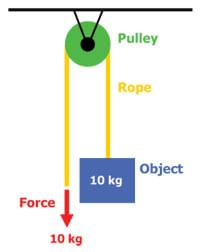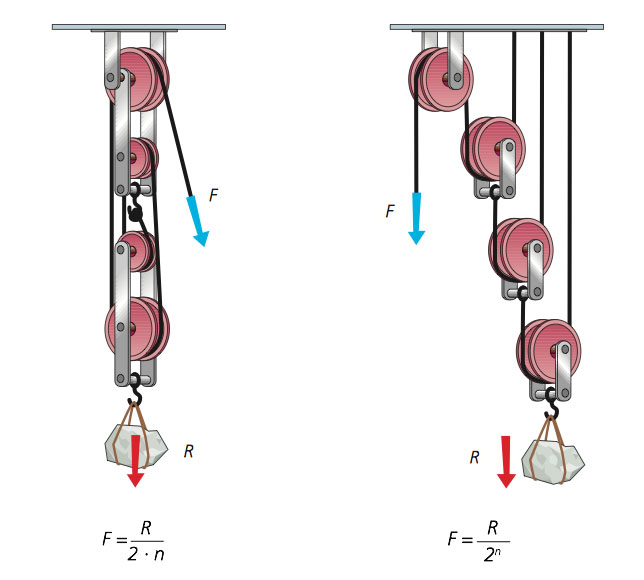3. ROTARY TRANSMISSION
Rotary transmission systems put two rotating elements into contact. These mechanisms have two purposes:
- Transferring rotary force from an input location to another location.
- Changing the rotary speed by using rotating elements of different sizes.
We can perform these functions with various mechanisms, such as the following:

All of these mechanisms keep the same speed ratios, but each one offers a different advantage. For example, friction wheels are simple but interlocking gears are more
reliable because they don't slip easily.
Uses: Friction wheels and pulleys are often used in toys and other devices with moving parts, such as industrial rollers or
conveyor belt systems, Gears are used in clocks, while sprockets and chains are common in
home appliances.
3.1. Changes in speed
If we want to increase the speed of a rotary system, we must trnasmit motion from a larger (input) element to a smaller (output) element.
If the input and output elements are the same size, the rotary speed remains constant. The rotary force will also remain
constant.
3.2. Speed ratios
The
relationship between the speeds of the two wheels is
inversely proportional to their sizes.
N2/N1 = D1/ D2
This relationship is called the ratio of transmission, where N is the speed of rotation and D is the diameter of the wheel.
 3.3 Belt drives and gear trains
3.3 Belt drives and gear trains
A gear train is a system of interconnected gears.

A belt drive is a system of pulleys cnnected by belts. Each belt connects a pair of pulleys, so they turn together.
To calculate the
ratio of transmission between the first wheel and the last wheel of a belt drive, we must multiply the ratios of transmission of the first pair of wheels and the second pair of wheels:
N4/N1 = D1 x D3/ D2 x D4
3.4 Changes in direction and rotation
We can use various systems to change the direction of rotation or the axis of rotation in a belt drive. We can also vary the distance between the wheels.
Paralled axes
 Crossed axes
Perpendicular axes
Crossed axes
Perpendicular axes
In some gear mechanisms, several cogs or teeth interlock at the same time. These mechanisms are more
precise and they transmit more rotary force, or torque.
Idler gear
In a simple two-gear system, the gears turn in opposite directions. If we want the gears to turn in the same direction, we put and
idler gear between them.
3.5. Worm drive
A worm drive reduces the speed of a rotary system very effectively. A worm drive has two parts: a worm shaft and a worm gear. The shaft has two, three or even more grooves. Each groove interlocks with one tooth of the worm gear.
Uses: We use worm drive for tuning the strings of a guitar, for elevator mechanisms and for speed reducing systems.








